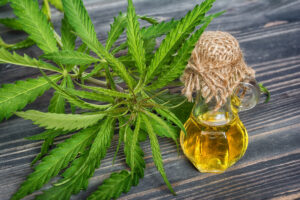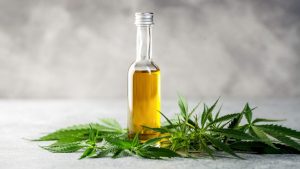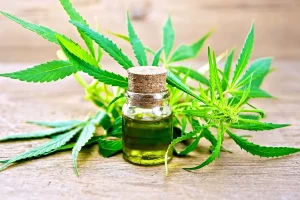Uncategorized
Unraveling the Mystery of CBD Black: Origins, Shades, and Benefits
In recent years, a new trend has emerged in the world of CBD products – the rise of CBD Black. These dark-colored cannabidiol products are capturing attention for their unique aesthetic and potential health benefits. In this magazine-style blog, we delve into the phenomenon of CBD Black, exploring its origins, characteristics, and the reasons behind its growing popularity among consumers.
The Origins of CBD Black: Understanding the Production Process

The process behind creating CBD Black products involves a careful orchestration of techniques aimed at enhancing both the visual appeal and potential benefits of the final product. Decarboxylation, a crucial step in the production process, involves heating raw cannabis material to activate cannabinoids like CBD, thereby unlocking their therapeutic potential. This step not only ensures maximum potency but also contributes to the deep, dark color characteristic of CBD Black products. Filtration plays a vital role in removing impurities and unwanted compounds, resulting in a cleaner and more refined extract. Additionally, infusion with botanical extracts, such as those derived from herbs or fruits, adds complexity to the flavor profile while imparting natural pigments that deepen the color of the CBD extract. By combining these techniques in a precise and controlled manner, producers can create CBD Black products that not only appeal to the senses but also offer a potentially enhanced therapeutic experience for consumers.
Exploring the Dark Side: Different Shades of CBD Black
Within the realm of CBD Black products, there exists a diverse spectrum of shades, ranging from deep ebony to rich chocolate brown. This variation in color intensity and hue can be attributed to a multitude of factors, each influencing the final appearance of the product. One significant factor is the choice of extraction method utilized during the production process. Different extraction methods, such as CO2 extraction, ethanol extraction, or solventless extraction, can yield extracts with varying degrees of pigmentation due to the presence of additional plant compounds. Additionally, the specific hemp strains used in cultivation play a crucial role in determining the color profile of the final product. Some hemp cultivars naturally produce darker pigments, resulting in darker-colored extracts. Furthermore, post-processing treatments, such as filtration and purification techniques, can also impact the coloration of CBD extracts. For instance, extensive filtration may remove certain plant materials and chlorophyll, resulting in a lighter-colored product, while minimal filtration preserves more of the natural pigments, leading to a darker hue. By understanding how extraction methods, hemp strains, and post-processing treatments contribute to the diversity of shades within the CBD Black category, consumers can make informed choices when selecting products that align with their preferences and needs.
The Appeal of CBD Black: Aesthetics and Perception

The appeal of CBD Black products lies in the captivating visual experience they offer consumers, as well as the psychological associations tied to their dark coloration. Dark hues evoke a sense of depth, richness, and sophistication, triggering subconscious perceptions of potency and quality. This aesthetic allure taps into consumers’ desire for products that exude luxury and exclusivity, elevating the overall perceived value of CBD Black offerings. Additionally, the contrast between the dark coloration and the vibrant green of traditional CBD extracts creates a visually striking impression, further piquing curiosity and interest. As a result, consumers are drawn to CBD Black products not only for their potential health benefits but also for the sensory experience and perceived status associated with their unique appearance. This interplay between aesthetics and perception underscores the powerful role that visual cues play in shaping purchasing decisions and consumer preferences within the CBD market.
Uncovering the Health Benefits: Potential Properties of Dark-Colored CBD
Dark-colored CBD products, often referred to as CBD Black, have sparked curiosity among consumers due to more than just their striking appearance. Beyond aesthetics, there’s a growing interest in understanding the potential health benefits associated with these products. One claim is that dark-colored CBD extracts may offer enhanced potency compared to lighter counterparts. This assertion suggests that the compounds responsible for the deep hues might also contribute to increased cannabinoid concentration, potentially leading to stronger effects. Additionally, there’s speculation about the increased bioavailability of dark-colored CBD, theorizing that the additional phytonutrients and compounds present in these extracts could enhance absorption and efficacy within the body. Furthermore, darker hues often indicate a higher presence of phytonutrients, such as flavonoids and terpenes, which possess their therapeutic properties and may synergize with CBD to offer additional health benefits. However, while these claims are intriguing, further research is needed to substantiate them conclusively. As the interest in CBD Black continues to grow, ongoing scientific inquiry will shed more light on its potential properties and benefits, providing valuable insights for consumers seeking to optimize their wellness routines.
Transparency and Quality: Navigating the CBD Black Market

In navigating the CBD Black market, transparency and quality are paramount considerations for consumers seeking to make informed choices about their purchases. With the proliferation of dark-colored cannabidiol products, ensuring transparency in sourcing, production, and testing processes is essential to safeguarding consumer trust and well-being. One key aspect of transparency involves verifying third-party lab testing, which provides independent verification of a product’s potency, purity, and safety. Consumers should look for products that display lab reports prominently, detailing cannabinoid profiles, terpene content, and the absence of contaminants such as pesticides, heavy metals, and residual solvents. Additionally, understanding the source of ingredients is crucial in assessing quality, as hemp plants can absorb toxins and impurities from their environment. By prioritizing products made from organically grown hemp and ethically sourced ingredients, consumers can minimize their exposure to potential contaminants and ensure a higher standard of quality. Ultimately, by staying informed and discerning, consumers can navigate the CBD Black market with confidence, making choices that align with their values and contribute to their overall well-being.
Beyond Appearance: Incorporating CBD Black into Wellness Routines
Exploring innovative ways to incorporate CBD Black products into daily wellness routines, from skincare and beauty regimens to culinary creations and therapeutic rituals. Highlighting the versatility and potential applications of dark-colored CBD extracts.
The Future of CBD Black: Trends and Developments
Predicting future trends and developments in the CBD Black market, including advancements in production technology, novel product formulations, and emerging consumer preferences. Speculating on the continued evolution and expansion of the CBD Black phenomenon.
Navigating the CBD Black Trend
CBD Black represents a fascinating intersection of aesthetics, science, and wellness in the world of cannabidiol products. Whether admired for its striking appearance, explored for its potential health benefits, or integrated into daily routines, CBD Black continues to captivate consumers and shape the landscape of the CBD market. As the trend evolves and matures, consumers need to stay informed, discerning, and mindful of quality when exploring the world of dark-colored CBD products.


